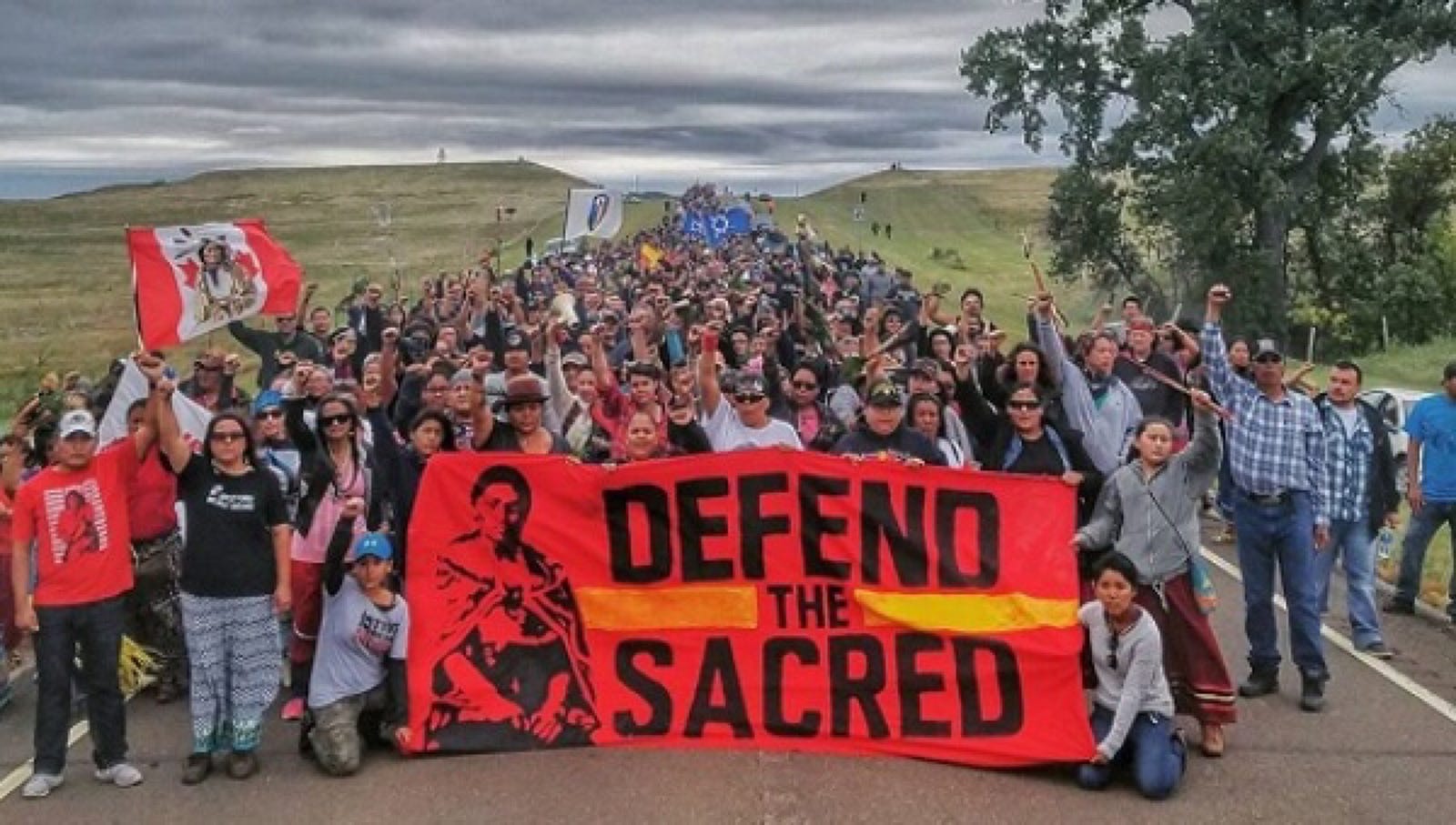
*Library hours are subject to change without notice.
Library Carrie Cell 785-766-0508

In 2014, the Standing Rock Sioux Tribe learned about the proposed Dakota Access Pipeline (DAPL) and began resisting its construction. In 2016, this escalated into an international movement to oppose the pipeline and support indigenous resistance to colonial violence. While most of the protest action happened at Standing Rock, solidarity actions took place across Turtle Island and around the globe. The hashtag, #NoDAPL, was developed to tag digital objects that referenced the actions and soon became shorthand for the movement itself. Throughout this LibGuide, I use “NoDAPL” and “Dakota Access Pipeline protests” interchangeably with preference to NoDAPL given Standing Rock leaders’ identification as water protectors, not protesters.
This LibGuide is intended to assist patrons who are interested in learning more about NoDAPL’s historical context, visual art created during and about it and related struggles. Because Native librarian Sarah Kostelecky of the Univeristy of New Mexico developed a thorough and nationally recognized Dakota Access Pipeline LibGuide focused on Native perspectives, I focus my search on resources not included in that LibGuide in order to avoid duplication and to fill in its gaps so that both guides can be used easily together. I suggest patrons start research with Kostelecky’s LibGuide before turning to mine, unless your specific focus is on NoDAPL visual art, struggles related to NoDAPL (such as other movements of indigenous resistance to pipelines). Most of the resources focus on action taken at Standing Rock, though some focus on or include information about solidarity actions taken across Turtle Island and globally. All of the resources included, other than the databases, are created by or with people who were directly on the ground in Standing Rock. All resources have been published since NoDAPL began in 2016, though databases and news sites will have resources on related struggles and other forms of indigenous resistance pre-NoDAPL.